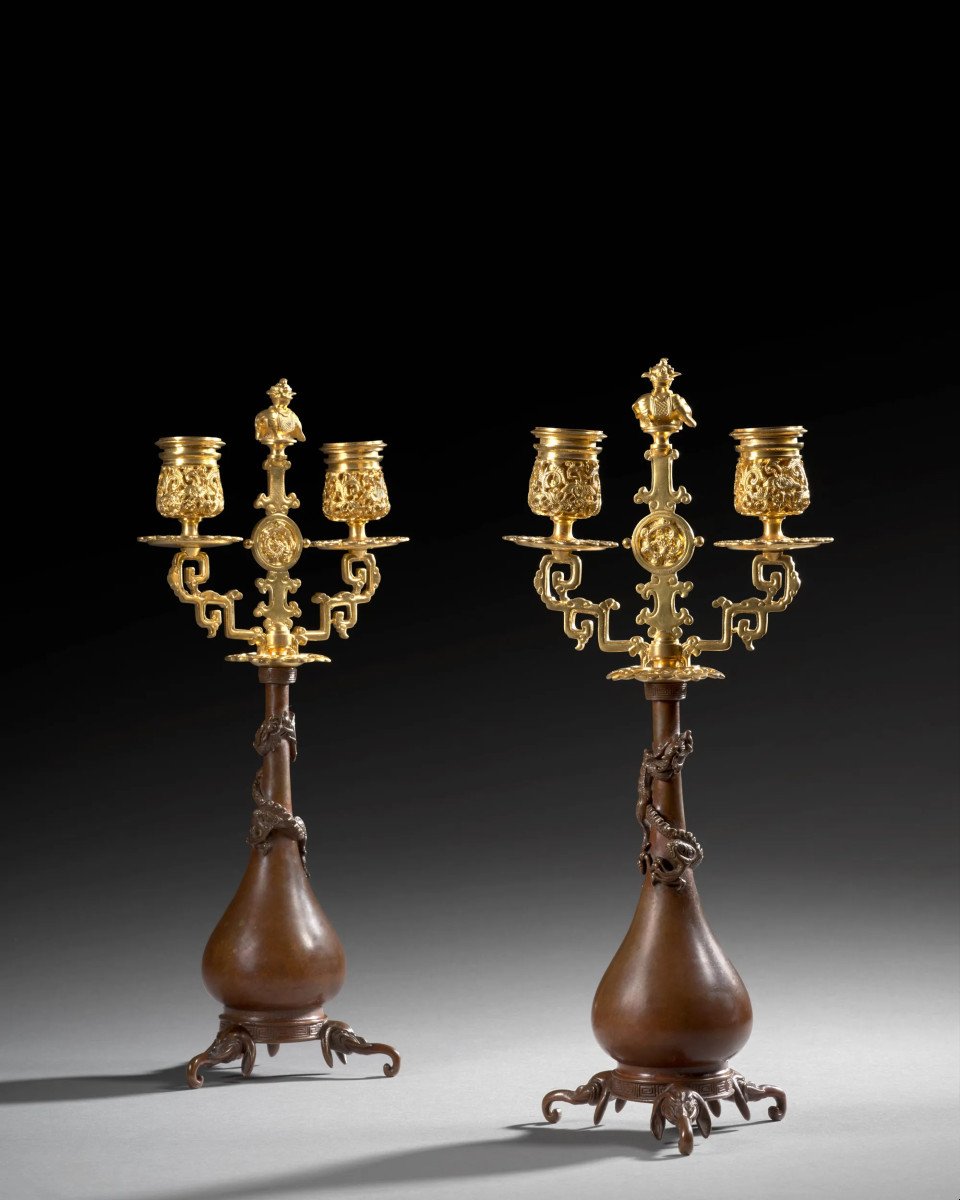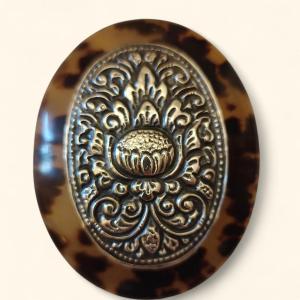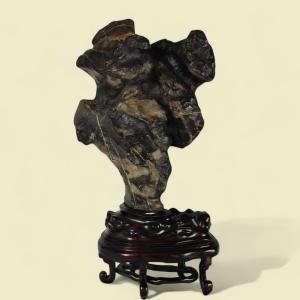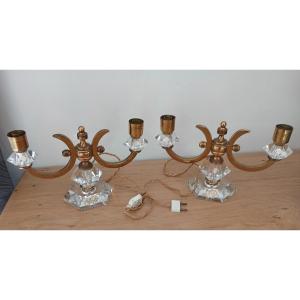The candlesticks themselves in the Japanese style in gilded bronze enhanced on the central part with a dragon in bas-relief and at the top with an elephant. The bobeches are original and are openworked with Japanese floral motifs.
The whole is typical of the work of Edouard Lièvre and of exceptional quality.
Signed by the founder 'F. Barbedienne' on the base.
Circa 1870-1880.
Edouard Lièvre collaborated with Ferdinand Barbedienne in particular for the creation of pieces inspired by Japan and orientalism. Modernity is then a taste for the exotic, with the discovery of Japanese art, mixed with a teeming imagination that Lièvre expresses through high-quality stylistic compositions and collaborations with the greatest Parisian houses such as de Sormani, Christofle and Barbedienne.
This Japanese decorative repertoire is found in the same drawing of dragons coiled around two double-body pieces of furniture at the Musée d'Orsay. The elephant-headed base is also visible on a pair of candelabra sold at Christie's London on September 29, 2005, lot 118 and a planter sold at Christie's New York on April 11, 2007, lot 42.
Born in Nancy, Edouard Lièvre trained in the studio of the French academic painter Thomas Couture before turning to the design of decorative arts. Lièvre's major clients included the actress Sarah Bernhardt, the courtesan Louise-Emilie Valtesse de la Bigne, and Albert Vieillard, director of the Bordeaux ceramics factory and an enthusiast for early Japonisme. The suite of furniture designed for Vieillard included the Cabinet Japonais now in the Musée d'Orsay in Paris. After Lièvre's death, his collections were sold at two auctions in 1887 and 1890. 'For a long time, art lovers have had the opportunity to see at auction a remarkable collection like the work of the recently deceased Master. His creations will make history...' (see Connaissance des Arts, No. 228, An Inspired Creator, by Roberto Polo, page 8).









































 Le Magazine de PROANTIC
Le Magazine de PROANTIC TRÉSORS Magazine
TRÉSORS Magazine Rivista Artiquariato
Rivista Artiquariato